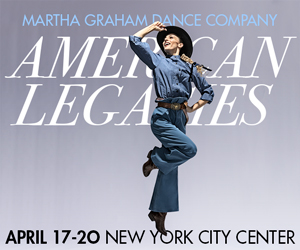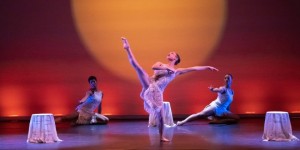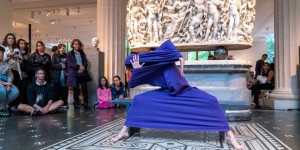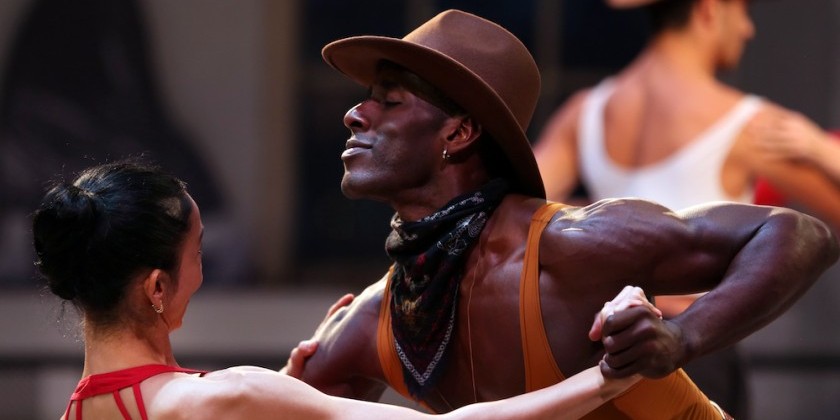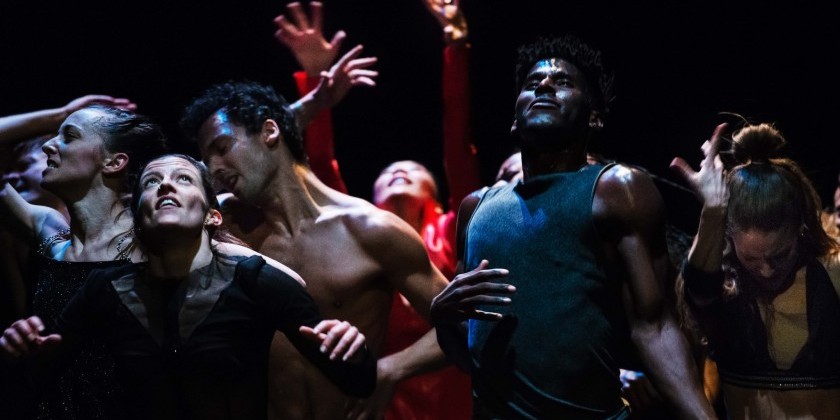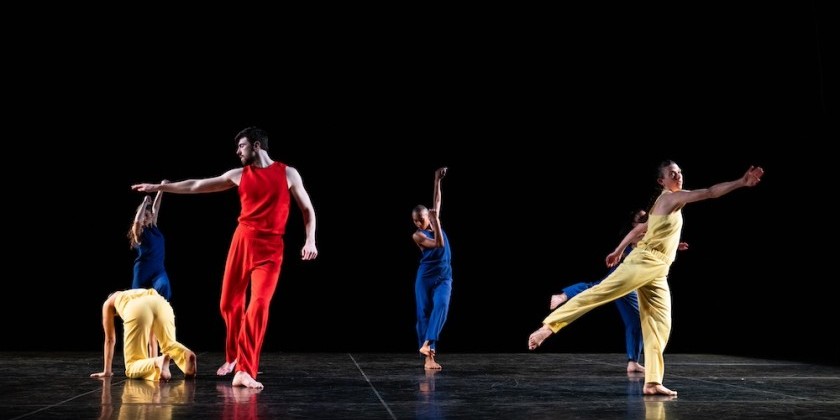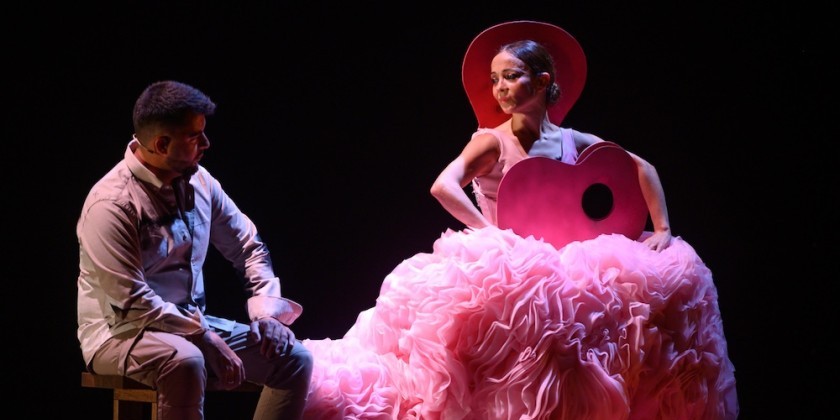IMPRESSIONS: Martha Graham Dance Company: Classic Graham with World Premieres by Baye & Asa and Annie Rigney
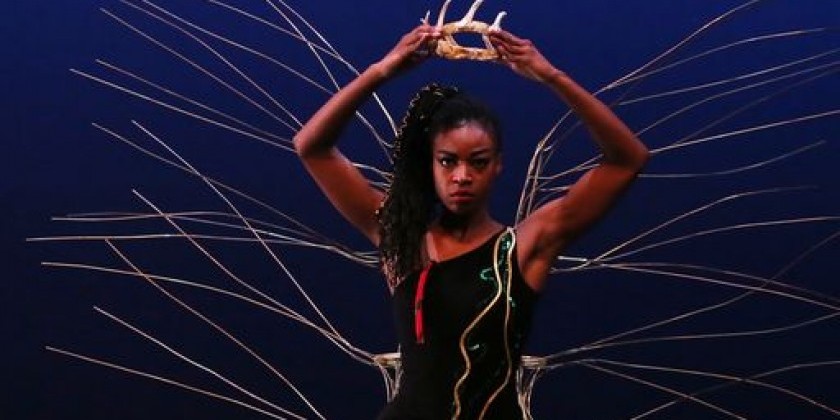
Choreography: Martha Graham, Baye & Asa, Annie Rigney, Sonya Tayeh (with Alleyne Dance, Sir Robert Cohan, Jenn Freeman, Juliano Nunes, Micaela Taylor, and Yue Yin), and Hofesh Schechter.
Music: Jason Moran, Âme and Hofesh Schechter, Samuel Barber, Aidan Elias (after Eugene Lester), Carlos Chávez, Carlos Surinach, Paul Nordoff, Marco Rosano, Andreas Scholl, and a Bulgarian choir.
Costumes: Martha Graham, Karen Young, and Caleb Krieg
Sets: Isamu Noguchi, and Philip Stapp
Lighting: Yi-Chung Chen, Jean Rosenthal and Beverly Emmons, and Nick Hung
Dancers: Lloyd Knight, Xin Ying, Natasha M. Diamond-Walker, Anne O’Donnell, Lorenzo Pagano, Anne Souder, So Young An, Alessio Crognale, Laurel Dalley Smith, Jacob Larsen, Marzia Memoli, Richard Villaverde, Leslie Andrea Williams, James Anthony, Devin Loh, and Kate Reyes
Venue: The Joyce Theater
Dates: April 18, 19 and 22, 2023
Proud of its heritage yet living fully in the present, the Martha Graham Dance Company remains at the forefront of American modern dance. Its recent season at The Joyce Theater from April 18-30 revealed a troupe equally at home in contemporary works and in the storied masterpieces of its late founder. Its handsome, versatile, and accomplished young dancers tackle any challenge eagerly. Only three years away from its centennial, in a field that is continually evolving, the company is not simply hanging on, but thriving. What a miracle!
Two stimulating creations received their premieres this season, joining last year’s crowd-pleasers, and excerpts from the company’s bedrock repertoire by Graham. Three separate programs were crammed with excitement. Martha is never far from anyone’s mind, and Cortege 2023, by the choreographic duo known as Baye & Asa (Amadi Washington and Sam Pratt), follows the example of the Lamentation Variations in attempting to distill and reimagine a Graham model. The jumping-off place, in this instance, is her 1967 Cortege of Eagles, in which Graham starred as Hecuba, the tragic Queen of Troy, who went mad witnessing the destruction of all she held dear.
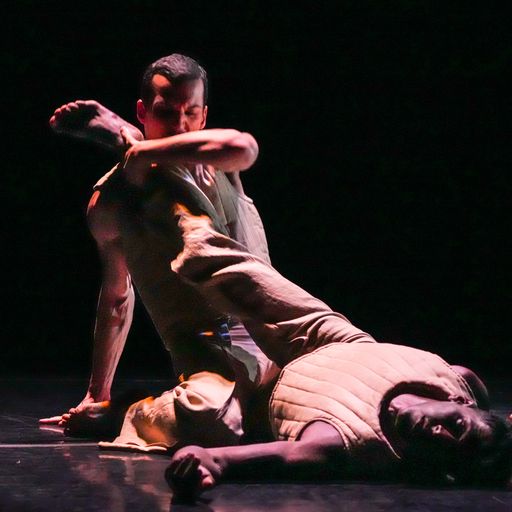
While both pieces condemn the insensate violence of war, Baye & Asa’s thrifty sketch dispenses with a narrative portraying rival factions. In Cortege 2023, the warring parties telescope into a single, suffering community, with seven dancers dressed identically in padded vests that evoke both the firing range and the asylum. Dispassionately, a voice intones, “In times of extreme violence, not even the most powerful or innocent may escape.”
Lloyd Knight dances a slithering, shell-shocked solo as "Charon", ferryman of the dead, but the ensemble is the star. Swirling and reconfiguring unpredictably, the group breaks apart to present tableaux where isolated couples grieve and comfort one another keeping vigil in the darkness. The brilliant centerpiece features dancers diving into and dragged out of a floodlit circle where they recreate these tableaux rapid-fire, pulling together the exploded fragments of the dance. Wow!
Cortege 2023 ends where it began, with the war’s victims kneeling in a diagonal line shrouded in black drapery, a device that implies recurring cycles and has the feel of a ritual.
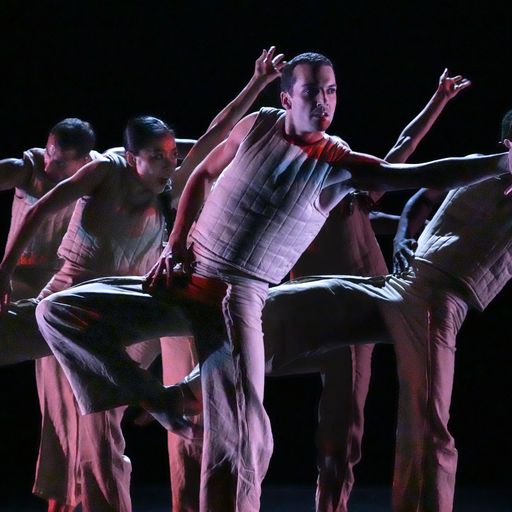
The season’s other novelty, Annie Rigney's Get Up, My Daughter, is similarly theatrical without resorting to narrative. At the outset, the five women who inhabit the dance appear defeated. They sprawl and cradle themselves, and push weakly against the floor. When these sad cases arise, they stagger and their bodies jerk obsessively. If only they could borrow some oomph from Graham’s steely heroines, or from the staunch Bulgarian sisterhood whose choruses provide the background.
In a second episode, a man appears suddenly, low down and threatening. Richard Villaverde’s duet with So Young An is ambiguous, as he simultaneously supports and restrains her. Though she can barely stand, and wobbles drunkenly, she persists in trying to push past him. He also persists, though she ignores him. A happy ending seems unlikely, but Rigney supplies one. After a third episode that features thrashing, trembling moves, the women pull themselves together, joining hands and rushing toward the front of the stage with faithful Villaverde in tow.
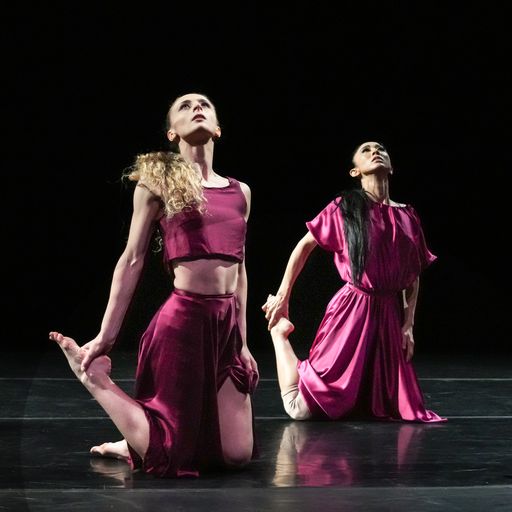
Graham’s own works grow more surprising and original with each viewing. The opening scene of Embattled Garden elicits gasps, as the curtain rises to reveal The Stranger hanging upside down from a Noguchi tree, while Eve lies splayed on a platform wielding an outsize comb. Tense with drama, Graham’s pieces offer their interpreters a virtuosic showcase like none other. As Eve, Anne O’Donnell is vain and tempestuous — a proper hoyden. Alessio Crognale, her Adam, wears an expression of martyrdom. Watching and waiting for their relationship to crack, Natasha M. Diamond-Walker’s Lilith is ripe and merry; while Jacob Larsen, as The Stranger, leers, slinks, and pounces abruptly.
Cave of the Heart recounts an ancient legend, yet the situation is timeless. The dance describes the passions of Medea, but also the abuse of power. Here we see The Chorus (read: ordinary people) watch aghast, as a person of privilege commits atrocities without compunction. Seen the headlines, lately? As a foil for Xin Ying’s viperous Medea, who madly dangles a blood-red cord, Anne Souder’s Chorus is all innocent protest. Souder flings herself desperately but ineffectually in the path of disaster, until she loses consciousness. Lloyd Knight’s Jason has a commanding stride, which helps him not at all when Medea takes revenge upon his child-like concubine (Marzia Memoli).
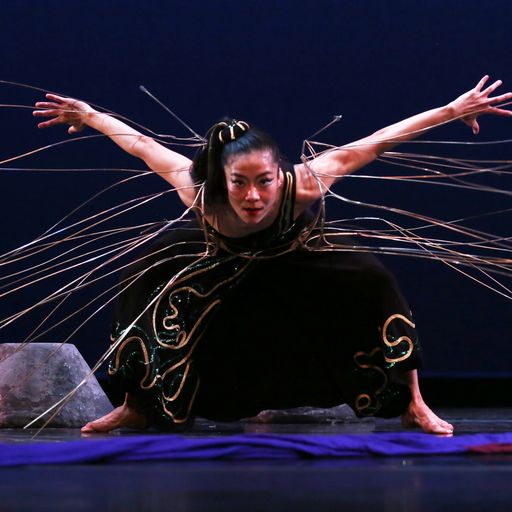
Graham’s dances are disturbing, even on the rare occasion when the choreographer stages a farce, because, informed by psychoanalysis, she insists that the mind is untrustworthy and divided against itself. In Every Soul is a Circus, we can laugh at the vanities of The Empress of the Arena (expressive Laurel Dalley Smith), but our laughter is pained. The Empress’s petulant antics, indulged by her male companions (Crognale and Larsen), lead her down a rocky path to self-knowledge. This path is different in appearance, but not in substance from that of other Graham heroines. Graham forces us to demand the truth, and — especially rare today — she makes us question ourselves.
Dark Meadow Suite, expertly arranged by Janet Eilber, is a plotless divertissement in Graham’s faux-archaic style. It offers wonderful opportunities to soloists So Young An and Jacob Larsen, who reveal another side to their talents, connecting the dance’s concise, angular forms with a warm rush of movement. No one should accept these extracts, which were culled to facilitate touring, as a substitute for the complete Dark Meadow, however. Graham’s Dark Meadow (1946) conducts a lengthy excursion into pre-history, with a questing protagonist, male and female psychopomps, and a Noguchi set that sprouts green leaves in a dramatic symbol of rebirth. Eilber needs to find a venue where the company can present the whole megillah at least once every few years. The same can be said of other, high-minded works from this company’s past that require an adult attention span.
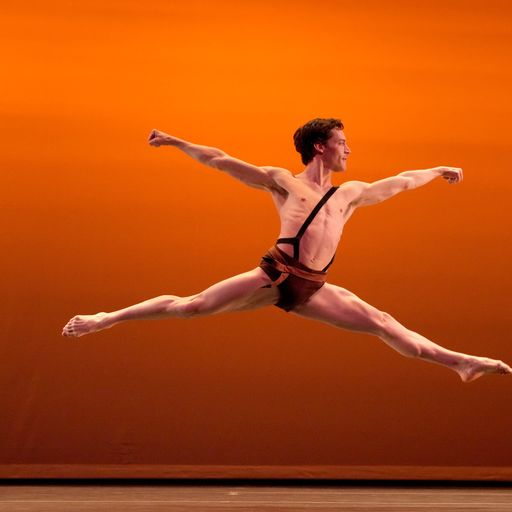
In the meantime, we have choreographers Sonya Tayeh and Hofesh Schechter, each of whom, last year, produced a flashy program-closer. In Canticle for Innocent Comedians, Tayeh takes vignettes by seven different choreographers and covers them with a shiny candy-shell. The pretty movement melts, and the piece is easy to digest. Schechter’s CAVE might have been titled “Rave,” since it suggests a meeting place where young people mix casually, and abandon themselves to rhythmic ecstasies. The kitchen-sink choreography combines Hip-hop with other popular dance styles (wait for the Riverdance section), and though it offers a terrific cameo to Lorenzo Pagano, a fluent mover who arrives fashionably late, the piece is 99 percent teenage spunk. It’s hard to argue, though, with a houseful of screaming fans.





